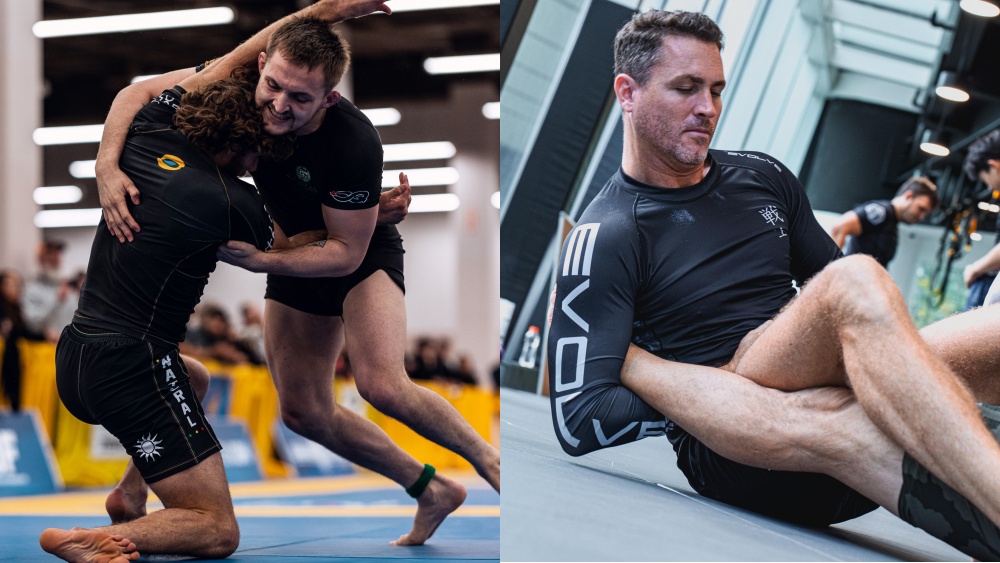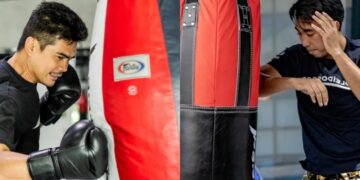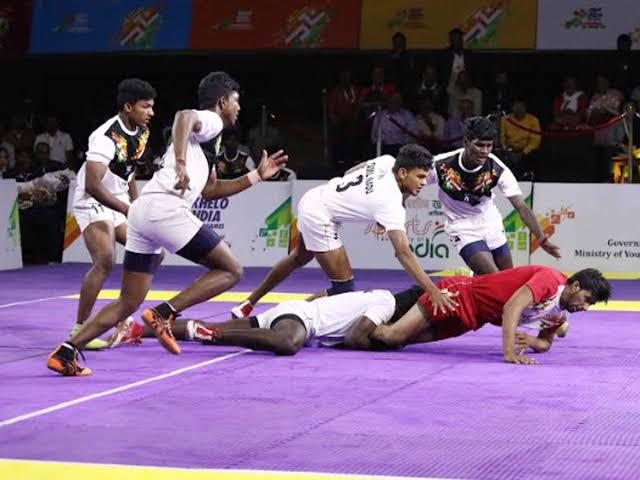
Brazilian Jiu-Jitsu is always evolving, with grapplers constantly finding new ways to blend techniques. Two skills that have gained popularity in modern No-Gi grappling are wrestle-ups and leg locks. At first glance, they seem like separate techniques, but when combined effectively, they can create a powerful strategy for attacking from guard.
For beginners, learning to mix wrestle-ups with leg locks can make their guard game much more dynamic. Understanding how to transition between these techniques will allow you to stay offensive and keep your opponents guessing. Today, we’ll review how to effectively use and combine these techniques into a devastating system.
Wrestle-Ups And Leg Locks Defined
A wrestle-up is when a grappler starts from a seated or open guard position and stands up to attack a takedown. Instead of using traditional sweeps to reverse the position, the wrestler-style approach allows you to get to your feet quickly and take control of the fight. This strategy is particularly effective in No-Gi, where movement and scrambles are crucial.
Leg locks are submission attacks that target an opponent’s leg, including the knee, ankle, and foot. These submissions have become a key part of modern grappling because they allow a fighter to finish a match without passing the guard. A well-applied leg lock can end a fight quickly, making it a valuable tool in any ruleset.
Why You Should Learn Wrestle-Ups And Leg Locks
Adding wrestle-ups and leg locks to your skill set makes you more dangerous and unpredictable. Many grapplers rely solely on sweeps to reverse position, but wrestle-ups offer another way to get on top. If a sweep attempt fails, switching to a wrestle-up allows you to stay aggressive instead of resetting.
Leg locks are a game-changer because they let you attack without passing the guard, as stated above. If an opponent defends a wrestle-up attempt by sprawling or pulling away, they often expose their legs, creating an opportunity for a leg lock. On the other hand, if they focus too much on defending leg locks, they may give you space to stand up and initiate a takedown. This ability to seamlessly transition between attacking options forces opponents into a defensive position, making it easier to control the fight.
Understanding both techniques also makes you more versatile against different opponents. A strong wrestler might have good takedown defense but weak leg lock awareness. A flexible guard player might escape traditional submissions but struggle against aggressive wrestle-ups. By having both options available, you can adjust your game plan based on your opponent’s strengths and weaknesses.
Combining Wrestle-Ups And Leg Locks
The key to blending wrestle-ups and leg locks is using one to set up the other. If an opponent reacts to a wrestle-up by sprawling or defending their legs, they may give you the opportunity to attack with a leg lock. Conversely, if they try to stand and escape a leg lock, they may create the perfect opening for a wrestle-up.
One way to apply this strategy is by attempting a wrestle-up from the single-leg X guard, a widely used guard in modern BJJ. If the opponent pulls their leg away to avoid the takedown, you can drop into a leg lock immediately. Another example is when attacking a straight ankle lock. If the opponent tries to disengage by standing up, you can follow them up and transition into a takedown. These combinations work well because they take advantage of an opponent’s defensive reactions, keeping you in control of the match.
General Considerations
When developing a game that includes both wrestle-ups and leg locks, it’s important to focus on control. A well-timed wrestle-up requires balance and positioning, just like a properly executed leg lock needs precise control of the opponent’s leg. Timing is also crucial. A wrestle-up is most effective when the opponent is slightly off-balance, while a leg lock is most successful when the opponent’s leg is fully trapped.
These skills take time to develop, and early struggles are normal. Training with experienced partners who understand both techniques will help accelerate progress. Avoid relying too much on one strategy, as becoming predictable will make it easier for opponents to shut down your attacks. Instead, aim to develop a game that allows you to switch seamlessly between takedown attempts and submission threats based on the situation.
Safety and Precaution
Leg locks, especially heel hooks, carry a higher risk of injury than many other submissions. Applying these techniques with control is essential to prevent unnecessary harm to training partners. Always execute leg locks slowly and with awareness, as joint damage can occur before pain is felt.
Tapping early and often is an important habit when learning leg locks. If there is any pressure on the knee or ankle, it’s best to tap immediately rather than risk injury. Training with reliable partners who understand leg locks will create a safer environment to develop these skills. When practicing wrestle-ups, maintaining good posture and avoiding reckless movements will help prevent injuries to both you and your training partners.
Drilling Wrestle-Ups And Leg Locks
Repetition is key to mastering any technique, and drilling wrestle-ups and leg locks regularly will improve confidence and execution. Practicing standing up from guard with proper balance is a great starting point for wrestle-ups. It’s also useful to drill leg lock entries from different guard positions, focusing on maintaining control before attempting submissions.
A useful drill involves transitioning between the two techniques. Start in guard and attempt a wrestle-up. If the opponent defends, drop into a leg entanglement and attempt a leg lock. If they counter by standing up, follow them into a takedown. This cycle of attacking forces the opponent to react, giving you opportunities to capitalize on their movement.
Live rolling is another effective way to refine these techniques. Using wrestle-ups and leg locks in controlled sparring will highlight areas that need improvement and help build comfort in applying them during real matches. Training with partners who have different styles will also provide valuable experience in adjusting strategies based on different reactions.
Conclusion
Wrestle-ups and leg locks are two powerful tools that, when combined, create a dangerous and unpredictable game. Learning how to use both allows you to stay offensive, giving you multiple paths to gain control and finish fights. By integrating both, you can create a versatile game that keeps opponents guessing and puts you in a dominant position.
You may also like:
5 Ways To Get The Back Control From The Standing Position
The back is the most dominant position in grappling sports such as Brazilian Jiu-Jitsu, Submission Grappling, and Mixed Martial Arts, both in the stand-up and on the ground (back mount). In the stand-up, it allows…
Becoming a great fighter in martial arts requires more than strength, speed, or endurance—you must also be smart. While most martial artists typically aren’t viewed as the most cerebral members of society, there are clear…
The phrase “iron sharpens iron” is commonly used in Brazilian Jiu-Jitsu circles, and there’s a lot of truth behind it. While rolling with a higher belt can be intimidating as a white belt who hasn’t…
BJJ is a journey filled with ups and downs at every stage of development. At times, progress comes quickly, and techniques flow effortlessly. Other times, it can feel like you’re stuck in place, seemingly unable…
Brazilian Jiu-Jitsu has always been a martial art rooted in evolution and adaptation. From its early days of self-defense to its current status as a premier grappling sport, BJJ has undergone numerous transformations. One of…
Brazilian Jiu-Jitsu (BJJ) quickly went from an almost unknown fighting style to one of the most popular combat styles worldwide because of how effective it was during the early days of mixed martial arts (MMA),…
Combat sports demand a fluid synergy of raw power, speed, mobility, balance, and agility. Animal movements are one of many ways fighters can strengthen their bodies to perform optimally. These exercises involve mimicking the movements…
Have you ever heard that voice that says, “Maybe I should get my backside off the couch and do something cool?” MMA could be the fun new activity you’re looking for. No, training won’t turn…
Finally, the school holidays are around the corner! Busy parents, don’t tear your hair out if your children are at home. There are more ways to keep them entertained besides Netflix’s selection of children’s TV…
Martial arts training is intense. It demands strength, endurance, flexibility, and mental focus. Whether practicing Brazilian Jiu-Jitsu, Muay Thai, boxing, wrestling, or MMA, the sheer physical and mental exertion required takes a toll on the…
Running has historically been a considerable portion of many martial arts fighters’ training regimens, but it’s not the only way to get your heart pumping and build up your cardiovascular endurance. Many non-traditional workouts challenge…
One Muay Thai Flyweight superstar, Rodtang Jitmuangnon, is set to face Japan’s kickboxing superstar, Takeru Segawa, in a Flyweight Kickboxing super-fight on March 23 at ONE 172 in Japan’s Saitama Super Arena. They are among…



































